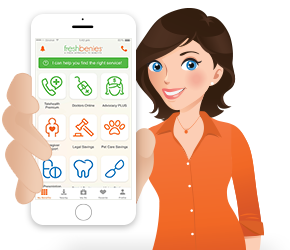Slashed Access to Physicians: 2 Ways Employers Can Solve It
Shrinking physician networks are more and more commonplace. Last week, I read an article in BenefitsPro called “10 States with the Narrowest Physician Networks." Probably because of all those David Letterman years, I’m a sucker for any Top 10 List. This list didn't have quite the same punchlines.
So which states made the list and what can you do about it if you're a broker or employer trying to assemble an attractive benefit plan?
According to the University of Pennsylvania and the Robert Wood Johnson Foundation study, below are the states with the highest percentage of narrow networks.
- GA: 83%
- FL: 79%
- OK: 78%
- CA: 75%
- AZ: 73%
- TX: 73%
- NJ: 67%
- NE: 63%
- OH: 60%
- MA: 60%
This reflects the growing trend to limit access to doctors in health plans. It's popular because insurance carriers can drive prices down by funneling visits to a smaller network.
Add to this two recent studies, and we see a larger trend emerge:
- Merrit Hawkins found the wait time for the average physician appointment in America is 18.5 days (and growing).
- The Association of American Medical Colleges found that by 2025, America will be short 46,000 to 90,000 physicians.
The picture of our future is clear: Americans will have less access to physician care. And not just primary care, but specialists as well. As the saying goes: “When one door shuts, look for a window.” What can you do for your employees?
We need new access points to Primary Care & Specialist physicians.
Primary Care Access:
The past decades have given birth to new ways of dealing with the simpler Primary Care visits without seeing a family doctor. I believe we’ll see even more growth in the access and acceptance of these methods (with even more innovation to come!):
- Urgent Care Centers
- Nurse Practitioners at the doctor’s office
- Nurse Practitioners at the local pharmacy
- Doctor / Nurse house call services (in urban centers)
- Telehealth*
*I’ll elaborate on this last one: tens of millions of Americans now have access to such a service. It puts a Board-Certified US-based physician (not a Nurse Practitioner) on a phone or video visit within minutes. Two-thirds of the types of visits we see our doctor for can be handled this way. These doctors can also call in a prescription to a local pharmacy, if the physician considers it appropriate. This service saves patients millions of hours in waiting-rooms and millions of dollars in copays. Compared to all the other options above, it doesn’t require huge investment in buildings or vehicles or manpower at a specific location. For a few dollars a month, employers are providing amazing value as part of a total benefit package.
Specialty Care Access:
Think about this: what are comparable ways to access specialty care (chirp, chirp - insert the sound of crickets here)? With all the innovative approaches listed above, it's amazing there aren't more options for specialty care access. Yet.
When your employees have a nagging question about a specialty issue (before they book a $250 visit and wait 2.5+ weeks), where do they turn? Google. WebMD. Facebook. These are impersonal, reactionary, and too often drive people into the Emergency Room or doctor.
The only national (and, in fact, international) broad-scale support system I know of is an expanded form of telehealth, called Doctors Online. With this service, employees email their issue to a panel of specialist physicians who research (and reach out to other specialty experts, if needed) and then respond with personalized advice. With an average response time of 3 hours, they have the luxury of researching with the best, most qualified specialists in the country. I'm pretty sure this beats 100% of the answers people find online. These physicians don't write a prescription (like the Primary Care telehealth doctors mentioned above), but they can address a much broader set of issues. Thereby saving many unnecessary specialist office visits. The types of providers employees can interact with include:
- All physician specialties
- Psychologists
- Dentists
- Dietitians
- Fitness Trainers
- And more...
So if you're feeling the pain of reduced access to primary care and specialist physicians, it might be time to investigate telehealth and doctors online services.
Now it's your turn: What does reduced access look like in your state? ...in your benefits plan? How are you dealing with it? Comment below or email me at reid@freshbenies.com with questions!















